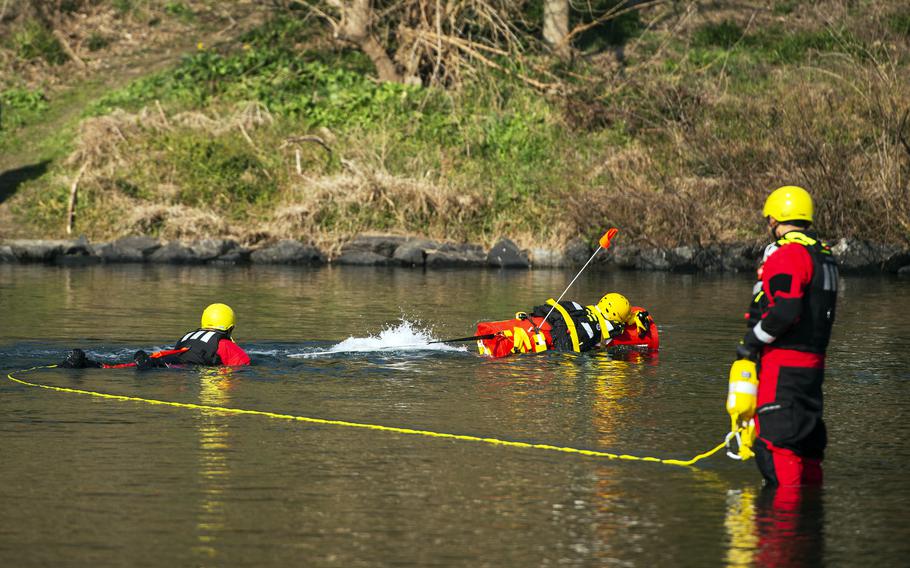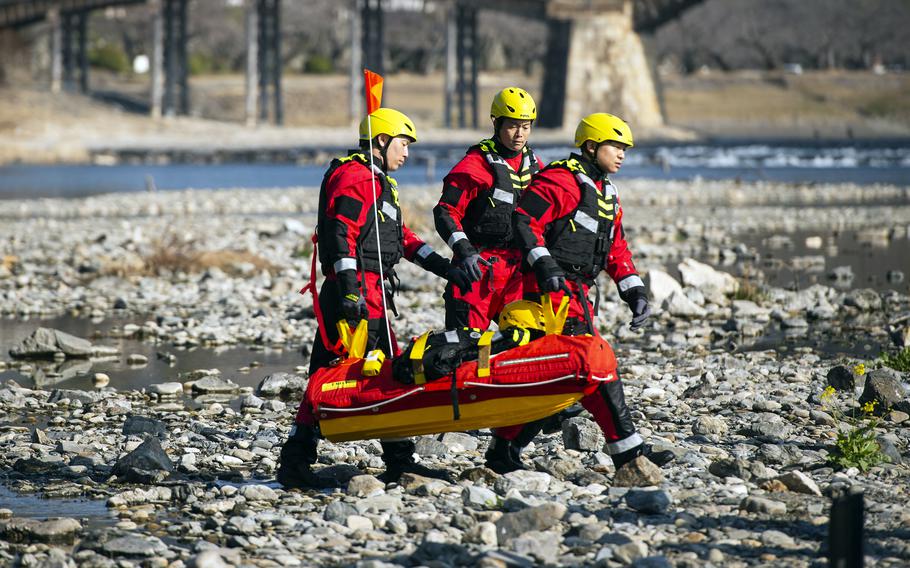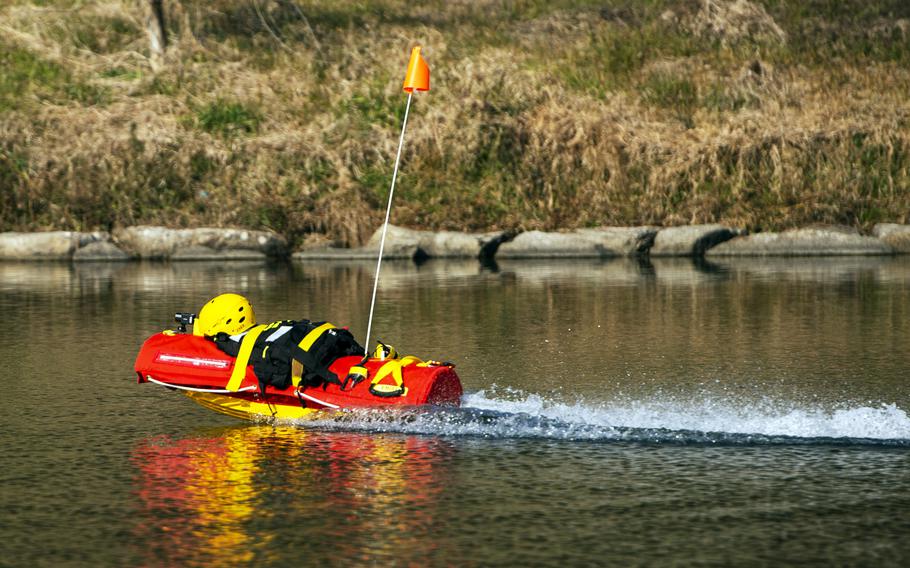
Firefighters demonstrate EMILY — the Emergency Integrated Lifesaving Lanyard — on the Nishiki River in Iwakuni, Japan, on Feb. 13, 2024. (Jonathan Snyder/Stars and Stripes)
MARINE CORPS AIR STATION IWAKUNI, Japan — Swimmers in trouble near this U.S. base south of Hiroshima may soon find EMILY coming to their rescue.
Gathered late Tuesday morning near the famous Kintaikyo Bridge over the Nishiki River, the Marines deployed EMILY — the Emergency Integrated Lifesaving Lanyard — to show off its maneuverability, speed and ease of use in a simulated rescue. Members of the Iwakuni City Fire Department joined in.
“EMILY is a water rescue device that’s just another tool we can use in emergency situations during swift water flooding,” Heath Bichel, special operations chief for the Marine Corps Air Station Iwakuni Fire Department, told Stars and Stripes at the event.
A three-person water-rescue team from the department demonstrated EMILY, but one person may easily operate the device, Bichel said.
Among its other advantages, EMILY saves the time a human team needs to don water rescue suits, he said.
“This limits the lifesaving hazard. … They can literally remotely control this and send it out,” Bichel said.

Firefighters demonstrate EMILY — the Emergency Integrated Lifesaving Lanyard — on the Nishiki River in Iwakuni, Japan, on Feb. 13, 2024. (Jonathan Snyder/Stars and Stripes)
EMILY was introduced in 2010 by Hydronalix of Green Valley, Arizona, for rescues at beaches and oceans and from rivers and floods, according to the company website. At just over four feet long and a foot wide, it weighs 26 pounds, with a 1.2-kilowatt motor with a 14-minute run time.
The swift water EMILY is capable of 25 mph with a 3½-mile range at full power on a single charge. It comes with rescue rope and a river rescue helmet, according to the company’s website.
The fire department acquired two swift water EMILYs in August, and after some training and operation guidance the watercraft were put into service in November, Bichel said.
At the demonstration, Tadashi Matsumae, diving unit leader for the city fire department, saw firsthand what the EMILY can do.
“I think it was a great training and interesting from the beginning to the end as it involved valuable and practical equipment, which has not been equipped domestically,” he said.

Firefighters demonstrate EMILY — the Emergency Integrated Lifesaving Lanyard — at the Nishiki River in Iwakuni, Japan, on Feb. 13, 2024. (Jonathan Snyder/Stars and Stripes)
The Marine Corps has also purchased EMILY for bases in Hawaii and Okinawa, Bichel said.
The device can vary in cost between $8,000 to $16,000, depending on the model, Bichel said.
The air station is ready to deploy the rescue device to the city if needed, he said.
“There is a mutual aid agreement and kind of a trust that we have, if needed, we would definitely be able to supply,” he said.
Stars and Stripes reporter Hana Kusumoto contributed to this report.